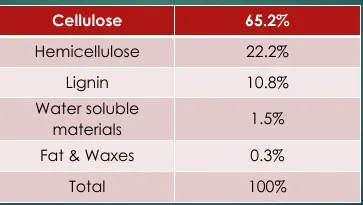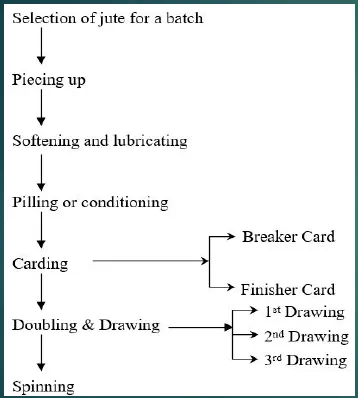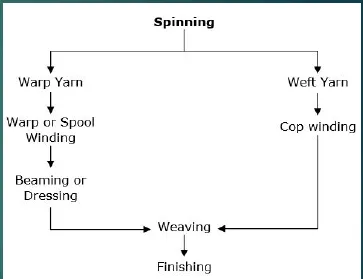1. Introduction to Jute Manufacturing
Jute is a natural cellulosic bast fiber. It’s a long staple fiber.
Jute consists of bast overlapped in such a way that they produce continuous filaments. They provide strength as well as flexibility to the stem of the plant. So they are called bast fibers.
Jute is consists of 65.2% cellulose.
Composition of Jute

Why jute is not wearable?
Jute has the same amount of cellulose as cotton. But jute is not wearable because of the presence of lignin. Lignin is a non-cellulosic substance. It is a hard substance. It is present in the cell wall of jute. Lignin makes jute harsh, hard and brittle. So, jute is not wearable.
Why jute is called golden fiber?
Jute is called golden fiber due to,
- It’s golden color.
- Brings foreign currency.
Use of jute
Diversified use of jute
- Automobile industry
- Aircraft industry
- Geo-textile
- Building construction
Name of everyday jute products
- Bags: ladies, lunch, shopping, school, etc. bags.
- Home: home decor, rope, rugs.
- Garments: Women’s sharee, slwar kameez. Man’s panjabi, fatua.
Jutton is the blend of jute and cotton.
Types of jute yarn
- Hessian warp yarn.
- Hessian weft yarn.
- Sacking warp yarn.
- Sacking weft yarn.
- CBC yarn of 224-294 tex used as carpet backing.
- Twine of different counts.
Jute yarn count
Pounds/spyndle: weight in pounds per 1440 yds of jute yarn is called pounds/spyndle. Here 1 spyndle= 1440 yards.
For example, if 1440 length of yarn weights 8 pound, then the count is 8 lbs/spyndle.
Classification of jute
Botanical classification
Two types of jute are mainly used,
- Chorchorus Capsularis
- Chorchorus Olitorius
Classification according to quality
Or, according to geographical distribution
- JAT: Best quality, good color, luster, finest, higher length. Grows in Mymensingh, Dhaka and Comilla
- District: Moderate quality, Close to jat in quality. This jute fiber is not uniform in textures and strands. Its color varies from light cream to dull gray. Its length is shorter. Two types,
- Hard District: Higher quality. Grows in Faridpur.
- Soft District: Lower quality. Grows in Noakhali, Pabna, Barisal, Sylhet etc.
- Northern: Somewhat inferior quality. This jute fiber is dull colored fluffy hair and barky. Generally medium length and weak. Grows in Rangpur, Dinajpur, Rajshahi and Bogra.
Properties of Jute
- Fiber surface and appearance is yellow to brown to dirty color. Lusty appearance.
- Tensile strength: Not stronger than flax because of the irregularities in the thickness of cell wall.
- Elongation: Breaks at 1.7%.
- Elastic Properties: Stiff fiber. Do not return to its original length after completely relaxed.
- Specific gravity: 1.5.
- Length: 1-4 meter.
Flow Chart of Jute Manufacturing


Acknowledgement
- Reference: Class Lecture